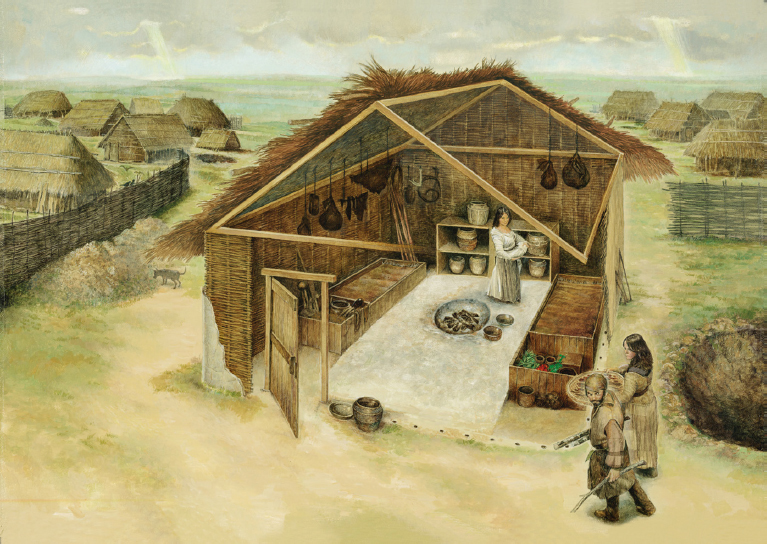Document 1.4
Neolithic Village at Durrington Walls
The objects found with the Iceman don’t just tell us about the individual who owned them. They also suggest something about the larger community to which he belonged. As we have seen, creating the Iceman’s objects required a wide variety of skills, including metallurgy, stone carving, wood carving, leather tanning, and weaving. We also know that his community did not subsist solely on hunting and gathering. As you learned in the “Individuals in Society” feature, the bluish tinge of his teeth proves that milled grain formed a substantial part of his diet, suggesting that the Iceman and his people were farmers as well as hunters. Thus, taken together, the evidence places the Iceman in a complex society, one with a certain degree of economic specialization and one that employed a technology-

Questions to Consider
- What features of the Neolithic house stand out to you? Why?
- What does the house tell you about the society that produced it and the people who lived in it?